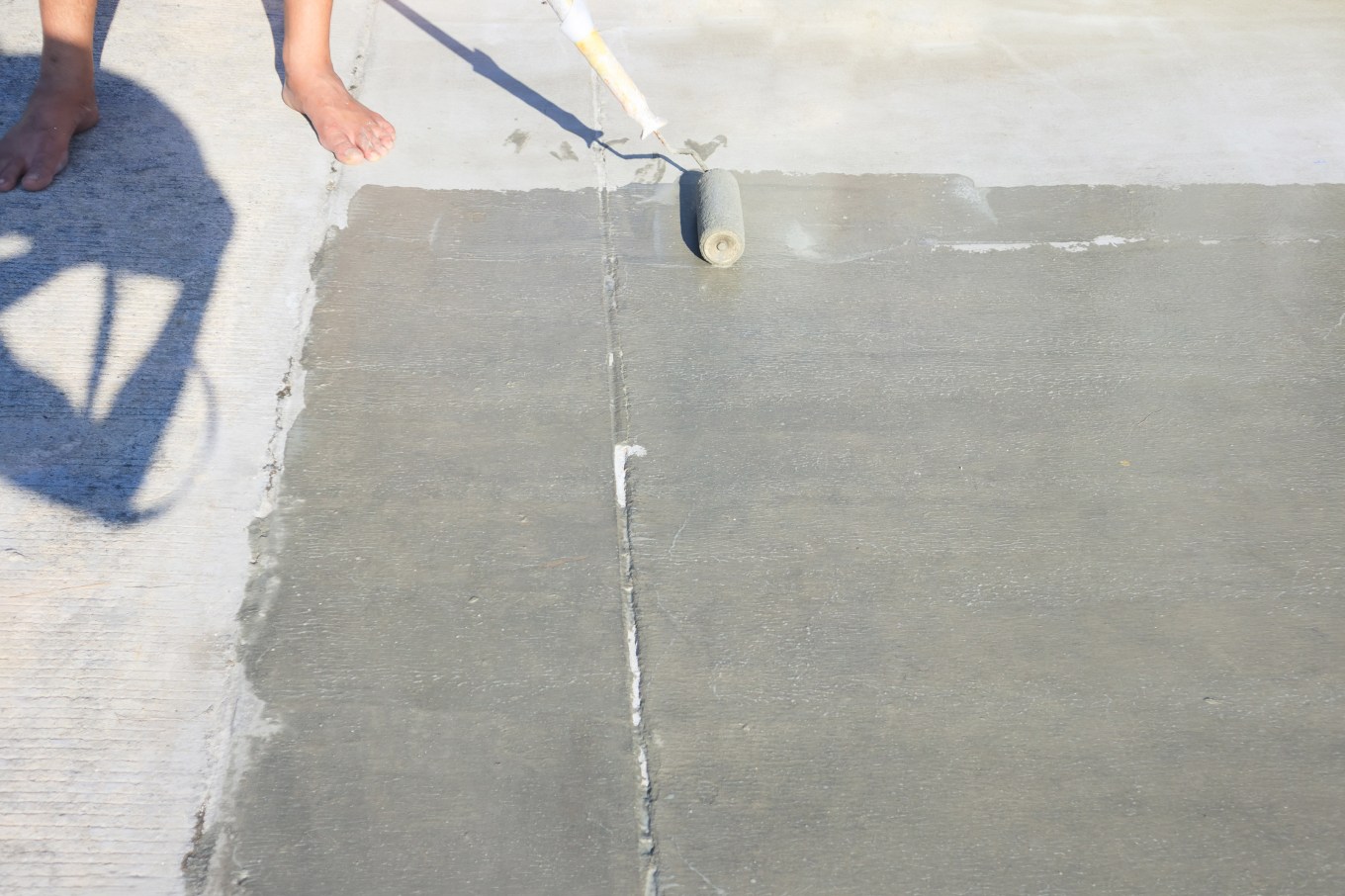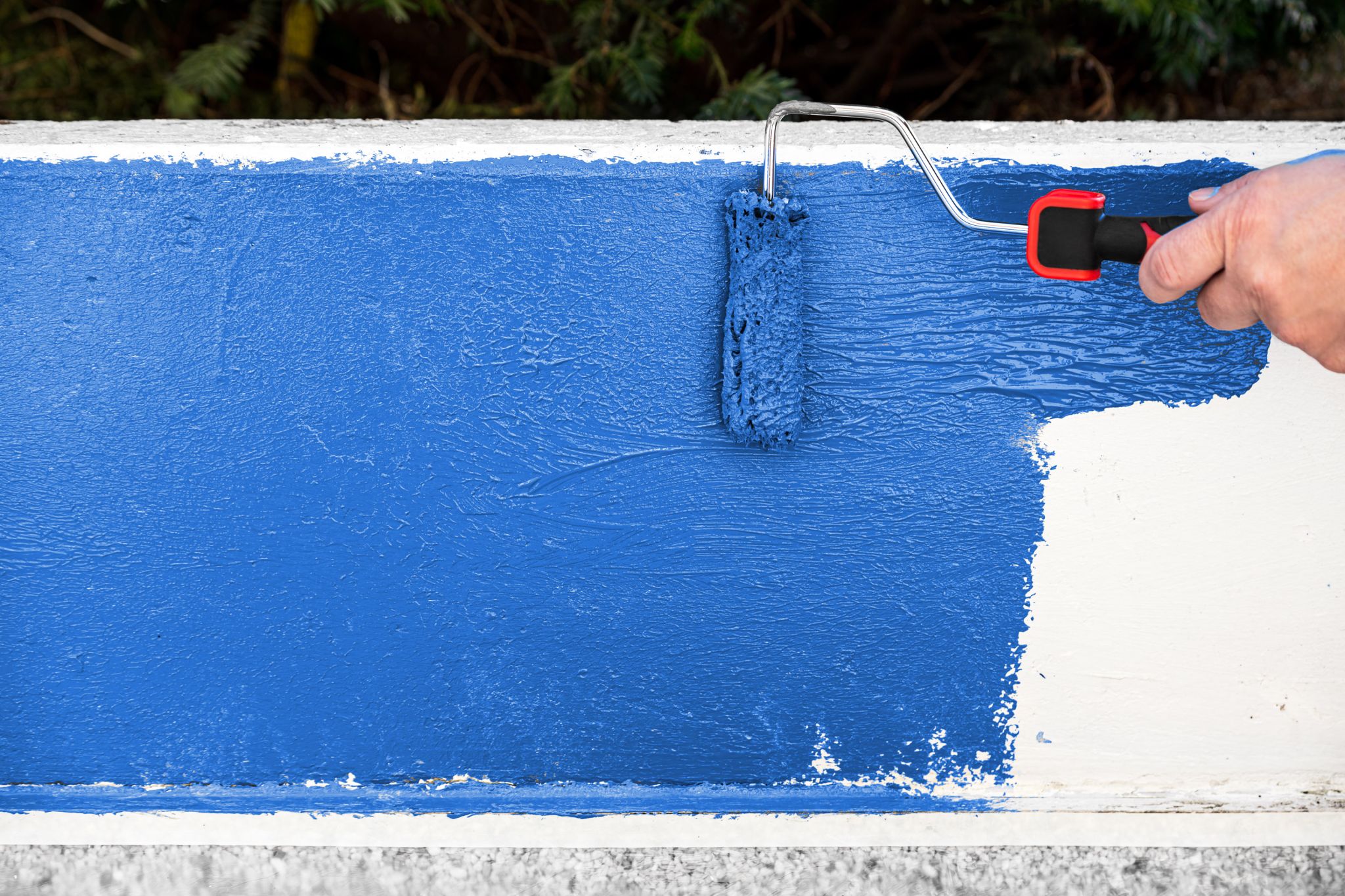Painting concrete surfaces requires more skill, tools, and time than throwing a coat on drywall. Here’s how to do it right.
Concrete painting is trickier than painting most surfaces: it breathes, transports moisture, and sucks up paint.
While you can paint drywall in a day or two, you’ll need a week or more to finish painting concrete. Continue reading below for tips — plus costs — on how to paint concrete surfaces:
How to Paint Concrete
Transforming your concrete surfaces can be a DIY project with the right paint and technique. Follow these step-by-step instructions for painting cement to achieve a durable finish for your indoor or outdoor spaces, including on concrete steps.
#1 Clean the Concrete
Cleaning concrete is a vital first step because the porous surface tends to trap dirt, grease, and oil.
Consider these guidelines for a clean concrete surface:
1. Remove dirt and grease with trisodium phosphate ($7 for four ounces), or choose a more Earth-friendly cleaner like Krud Kutter’s pre-paint cleaner ($15 for 32 ounces).
2. Yank off vines and moss growing on the foundation. Use a pressure washer to finish off the remaining roots and dirt.
3. Remove efflorescence, a white powder that forms on moist concrete. Try Krud Kutter Concrete Clean & Etch ($13 for 32 ounces); if you need more cleaning muscle, try phosphoric acid masonry cleaner ($40 per gallon).
#2 Remove Old Concrete Paint
Cement and concrete are versatile mediums used both inside and outside the home. Wherever the concrete is set, if it has old paint on it, you’ll need to remove that first.
For indoor settings: strip peeling or blistering paint indoors with a wire brush ($3 to $8), a paint scraper ($4 to $21), and lots of elbow grease.
For outdoor settings: remove old concrete floor paint with a power washer (rents for about $68 per day).
#3 Seal Interior Concrete

Water moves easily through porous concrete, so sealing interior walls is necessary to prevent moisture from seeping in, which could prompt mold growth and that cold, damp basement feel. Before applying new concrete paint, use a masonry sealer, such as MasterSeal 581, that also patches any cracks ($63 for a 50-pound bag).
Carefully follow directions for mixing, applying, and curing the sealer. MasterSeal 581, for example, requires two coats; the manufacturer recommends curing for five to seven days before applying the second coat.
#4 Prime the Concrete
Concrete primer, called block primer, fills pores and evens out the surface. For exterior foundations and walls, use exterior-grade block filler, such as Behr’s Concrete and Masonry Bonding Primer, which is also good for interior concrete ($27 per gallon). Primer dries in two hours; wait at least eight hours, but no more than 30 days, to apply the new concrete paint.
#5 Paint the Concrete
Masonry paint (also called elastomeric paint or elastomeric wall coating) is one of the best concrete paints because it contains binders that contract and expand with the concrete. Exterior house paint can crack and peel on concrete.
Masonry paint ($29 per gallon) can be tinted (or you can even opt for bold colors on your concrete patio) and is much thicker than exterior paint. Apply it with a masonry brush ($9), a high-capacity (3/4-inch or higher) roller ($6), or a texture roller ($13).
Some masonry paint is thicker than exterior paint and contains fine particles that can clog air sprayers. If you want to spray-paint cement, ask your local paint store for a product that will work well in a sprayer ($29 per gallon). This may be more helpful for larger concrete surfaces that would take a longer time to paint with a roller or brush.
No matter how you apply paint, let it dry for a day between coats. You’ll probably need two to three coats, so check the long-range weather forecast before you begin.
Painting Concrete: Frequently Asked Questions
Can You Paint Directly on Concrete or Cement?
Yes, you can paint directly on concrete or cement surfaces, but it's crucial to prepare the surface properly by cleaning and priming it to ensure better adhesion and longevity of the paint.
What Kind of Paints are the Best Concrete Paints?
For painting concrete, it's recommended to use masonry paint which usually contains acrylic resins. These paints offer durability, adhesion, and resistance to weathering, which leads to a long-lasting and aesthetically pleasing finish.
Do You Have To Prime Concrete Before Painting It?
It's generally advisable to prime concrete or cement before painting to enhance adhesion and ensure a smoother, more durable finish. A quality primer helps seal the concrete surface and promotes better paint adherence, resulting in a professional-looking paint job that's more likely to last.
